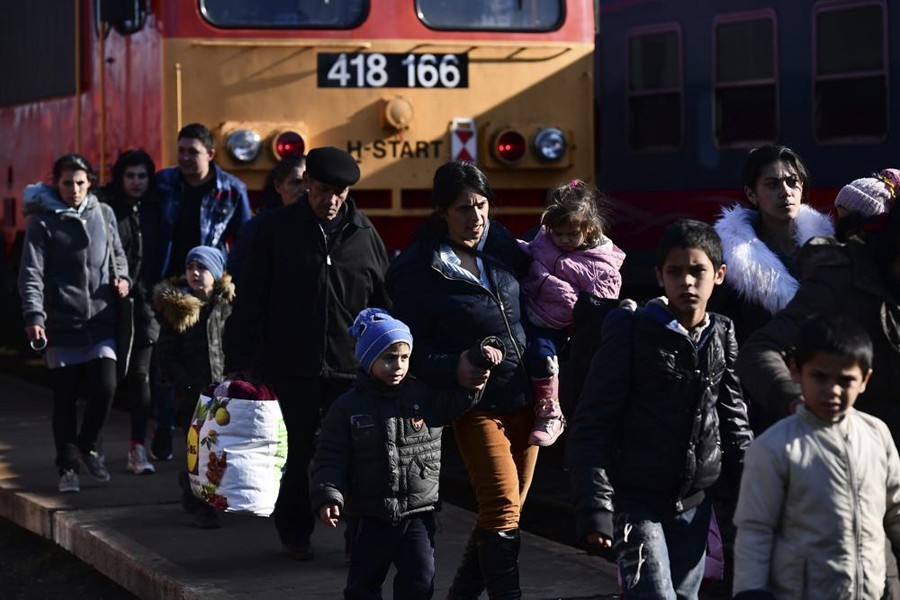The war in Ukraine evokes the most significant refugee influx in Europe, with women and children making up the vast bulk of those who have fled.
Since the start of the invasion of Ukraine, at least 12 million people have left their homes, according to the United Nations. More than five million people have fled to other nations, while seven million are thought to be internally displaced in Ukraine.
The cities and towns of Europe are teeming with Ukrainians needing immediate medical attention, psychological counselling, and housing for worried parents, terrified kids, frail elderly people, and many others who have no identification or material possessions but only mental and physical scars of war.
This war has posed a significant social and humanitarian problem for many European states and their society, both inside and outside the EU, due to the extraordinary migration of people it has brought about.
Many question if Europe can continue to handle the refugee problem by offering refugees short- and long-term assistance.
The New Wave of Refugee
The war in Ukraine has evoked another fastest-growing refugee crisis, with more than 5.8 million people have fled Ukraine to neighbouring countries. Although Ukrainian migrants can also travel to safety through Slovakia, Hungary, and northern Romania, Poland is the leading destination for refugees due to its sizeable Ukrainian population of roughly 1.5 million.
It seems almost cruel to bring up another problem that is developing right under the UK and EU leaders' eyes during a week when Russia threatened to acquire more land in Ukraine, gas shortages loomed, and inflation and COVID rose across Europe. Understanding what is causing the new rise is crucial.
Russia began its military invasion in February 2022. Fathers hugging their children farewell through car windows, families battling to board trains in crowded chaos, and the shock and tiredness on the faces of those who have reached safety have all been witnessed by people worldwide.
Despite the rising number of Ukrainian refugees, European Union welcomed them with open arms. It provided them temporary protection directives, which any refugee could dream of. Still, Europe has to bear the brunt of extra pressure on its economy and society owing to the uncertainty of the ceasefire between Russia and Ukraine.
How Deep the Ukrainian Refugee Crisis Is
No matter how the crisis in Ukraine plays out, it will be costly to assist the millions of Ukrainians who are escaping the War. Early estimates identified the cost of storing, moving, feeding, and processing the influx of people at USD 30 billion for the first year.
The pandemic has left European economies still recovering and dealing with persistent supply chain disruptions and excessive prices. Moreover, this cost comes when the EU is recovering from the COVID-19 disease problem, with significant supply chain disruption and an urgent need to transfer resources to the energy transition.
Therefore, the EU is not ready and cannot handle another major migration crisis as expensive as it will be to temporarily assist families forced to flee because of the war. The long-term cost of integrating millions of people would be much more significant and place tremendous pressure on housing, education, and healthcare systems. Despite the outpouring of support and donations, the burden of sheltering the refugees is incredibly uneven.
Economically, Europe has to take the extra burden of sheltering a huge number of refugees. In the European Union, there were almost 13 million unemployed people in January. In the eurozone, inflation is running at 5.8 per cent, which will rise to 7 per cent this year, given soaring energy prices.
Politically, Governments are under rising internal pressure as voters become more concerned about resources for their populations. Socially, the refugee crisis will create a lack of cohesion among the citizens of the host countries. The grim outlook for a political resolution to the conflict in the immediate future suggests that refugees may take some time to return to Ukraine. Hence, it is likely that Ukraine will remain in an unstable situation with some volatile ceasefire and with the partly occupied territory.
Two Faces of European Refugee Policy
Ukrainian refugees are being welcomed in Europe, and the EU has triggered temporary protections so that the millions of refugees from Ukraine can quickly have a sanctuary, social assistance, access to healthcare, schooling for their children, or the possibility of working. But nations have been accused of double standards.
EU countries do not show the same generosity to refugees from Africa, Asia, and Latin America.
Nations have been accused of being imposters in terms of their treatment of refugees from other conflicts. During the Rohingya crisis, their response to Myanmar's persecution was confined to mere limited economic sanctions and aid to the Rohingyas. In Just a few weeks of 2022, 2.6 million Ukrainian fled and received very different treatment from these respective countries.
One of the crucial factors can be racial and religious bias which embodies their two-faced policy regarding the refugees. One crucial point is how Europeans empathise and sympathise with the fate of the Ukrainians in their struggle against the Russian invasion.
However, the Russia-Ukraine war has continued for seven months, and there is no sign of peace talks between the conflicting parties, which leaves the fate of the Ukrainian refugees in great uncertainty. Besides, the global food and energy crisis, price hikes, and the high inflation rate torpedo Europe's economy and political stability. Europe will face political and social backlash that often follows the refugee crisis, and their double face refugee policy has also been revealed in front of the world.
Saume Saptaparna Nath is a research associate at the KRF Center for Bangladesh and Global Affairs.


